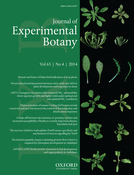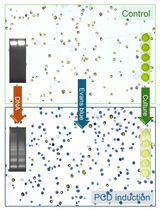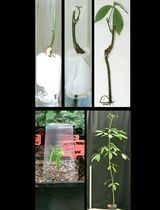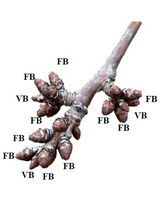- EN - English
- CN - 中文
Salinity Assay in Tomato
番茄耐盐实验
发布: 2014年08月20日第4卷第16期 DOI: 10.21769/BioProtoc.1215 浏览次数: 16336
评审: Arsalan DaudiAnonymous reviewer(s)
Abstract
Tomato is one of the most important horticultural crops worldwide, and is cultivated in semi-arid regions in which soil and groundwater salinity is an increasing limitation to yield. The assessment of the responses of new cultivars to salt and the comparisons among cultivars and wild species are of great interest in tomato breeding. This assay provides a reproducible and reliable method for screening tomato responses to NaCl salinity under hydroponic conditions in growth chambers. Although NaCl is the most commonly used salt in salinity studies, other salts such as Na2SO4, MgCl2 or MgSO4, usually found in saline soils, can also be assayed (Nebauer et al., 2013). Plants can be maintained for 30-45 days under the described conditions, although significant effects on growth can be observed after 10 days, depending on the salt and concentration used.
Keywords: Tomato (番茄)Materials and Reagents
- Solanum lycopersicum seeds
- Agar
- Sodium hypochlorite (NaClO)
- Potassium nitrate (KNO3)
- Ammonium nitrate (NH4NO3)
- Calcium nitrate [Ca(NO3)2.4H2O]
- Magnesium sulphate (MgSO4.7H2O)
- Ethylene diamine-N, N bis (2hydroxyphenylacetic acid) Ferric sodium complex (Fe-EDDHA)
- Boric acid (H3BO3)
- Manganese chloride (MnCl2.4H2O)
- Zinc sulphate (ZnSO4.7H2O )
- Copper sulphate (CuSO4.5H2O)
- Sodium molybdate (Na2MoO4.2H2O)
- Sodium chloride (NaCl)
- Sodium sulphate (Na2SO4)*
- Magnesium chloride (MgCl2)*
- Magnesium sulphate (MgSO4)*
*Note: These salts are necessary only if they have to be assayed. The standard assay is performed with NaCl. - Non-saline nutrient solution (see Recipes)
- Salt stock solutions (see Recipes)
Equipment
- Eppendorf-type tubes (1.5 ml)
Note: Caps are removed and the tube end is cut with scissors (Figure 1A). Tubes are placed in a tube rack (with a sealed bottom, Figure 1B) and filled with 0.6% agar in tap water (melted in a microwave) using a 50 ml syringe (Figure 1C-D).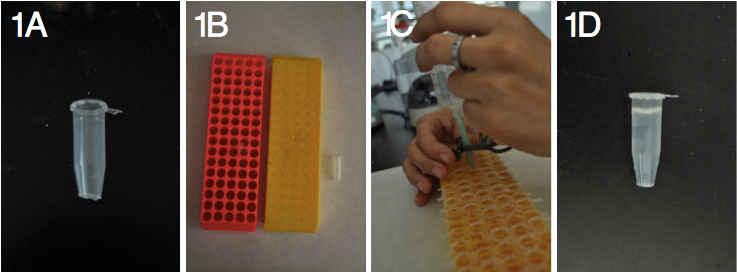
Figure 1. Preparation of the tubes to hold plantlets. A) Cut tube, B) Racks with a sealed bottom, C) Filling tubes with agar in the rack and D) Tube filled with agar. - Opaque 10 L containers with cover
Polyethylene containers (40 cm long x 30 cm wide x 12 cm high) are used. Covers are bored with a drill to allow the placement of the Eppendorf-type tubes (Figure 2).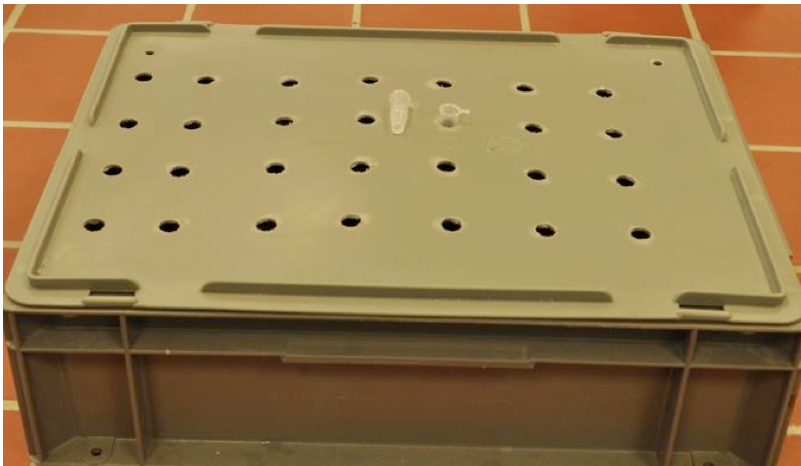
Figure 2. Example of a container with a bored cover to hold Eppendorf-type tubes - Petri dishes
- 50 ml syringe
- Growth chamber
- ‘Aquarium’-type air pumps
- Timer control
- Microwave oven
- Pasteur pipettes
- Racks for Eppendorf-type tubes with a sealed bottom
- Plastic trays with humidity domes
- Precision balance (± 0.001)
Procedure
文章信息
版权信息
© 2014 The Authors; exclusive licensee Bio-protocol LLC.
如何引用
Renau-Morata, B., Sánchez-Perales, M., Medina, J., Molina, R. V., Corrales, R., Carrillo, L., Fernández-Nohales, P., Marqués, J., Pollmann, S., Vicente-Carbajosa, J., Granell, A. and Nebauer, S. G. (2014). Salinity Assay in Tomato. Bio-protocol 4(16): e1215. DOI: 10.21769/BioProtoc.1215.
分类
植物科学 > 植物生理学 > 非生物胁迫
植物科学 > 植物生理学 > 植物生长
植物科学 > 植物发育生物学 > 综合
您对这篇实验方法有问题吗?
在此处发布您的问题,我们将邀请本文作者来回答。同时,我们会将您的问题发布到Bio-protocol Exchange,以便寻求社区成员的帮助。
Share
Bluesky
X
Copy link



